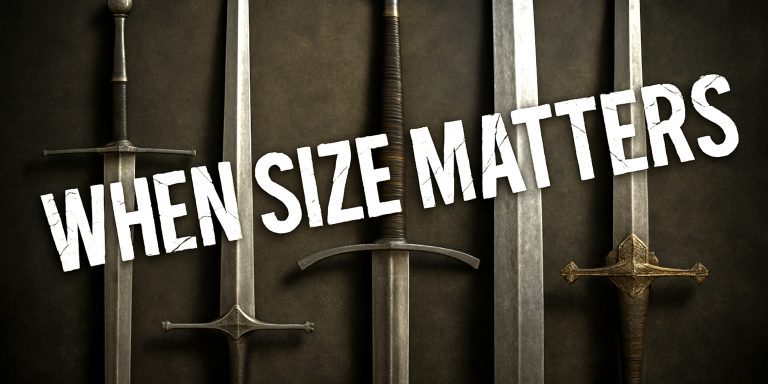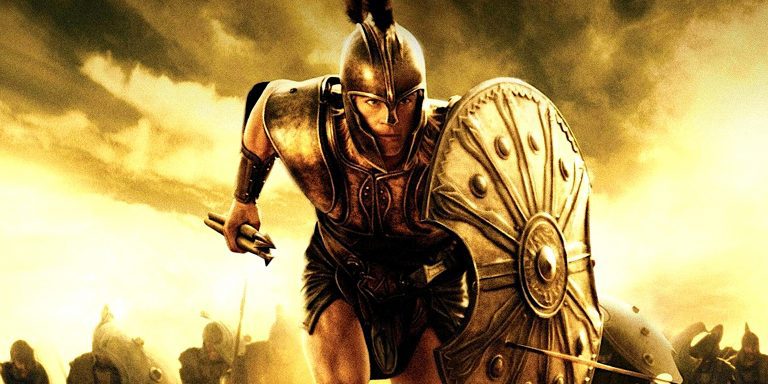
The British 1796 infantry officer’s sword marked a shift in how officers armed themselves during the late eighteenth century. It served both as a functional sidearm and a visible marker of rank. Although it lacked the brutal cutting power of its cavalry counterpart, it became a familiar sight across Europe during the Napoleonic period. Its refinement, modest weight and suitability for dress and field use made it an enduring design within British service.
Specification
| Feature | Detail |
|---|---|
| Primary Use | Infantry officers, dress and battlefield sidearm |
| Origin | Britain, introduced 1796 |
| Blade Length | Commonly 31 to 33 inches |
| Blade Type | Straight, single edged or occasionally double edged, often spadroon type |
| Hilt | Gilt brass guard with shell motifs, knucklebow, urn or cushion pommel |
| Grip | Wood core wrapped in shagreen with twistwire |
| Scabbard | Leather with gilt brass fittings or all brass for higher ranking officers |
| Weight | Between 650 g and 850 g |
History and Evolution
The design grew out of the spadroon tradition that had been circulating across Europe since the mid eighteenth century. Officers wanted a sword that looked elegant but could still be used with confidence if fighting broke out. The 1796 pattern pulled these ideas together into a codified regulation.
Its straight and relatively narrow blade made it a weapon more suited to point work than deep slashing. By the early nineteenth century some officers expressed frustration with its performance in heavy combat, which later encouraged the adoption of more robust models such as the 1822 pattern. Even so, the 1796 remained common well into the Peninsular War and Waterloo campaigns.
Advantages and Disadvantages
Advantages
- Light and well balanced, easy for prolonged wear.
- Refined appearance suitable for officers on parade or in formal settings.
- Capable of effective thrusting.
- A strong collectors market due to its association with the Napoleonic Wars.
Disadvantages
- Limited cutting ability compared with curved sabres.
- The blade could feel too flexible for harsh combat.
- Surviving examples often show grip wear, making pristine specimens expensive.
Comparison with Similar Weapons
| Sword | Key Differences |
|---|---|
| 1796 Light Cavalry Sabre | Heavy curved cutter designed for mounted troops, far more powerful in slashing. |
| 1803 Infantry Officer’s Sabre | Curved and stronger blade, better combat performance, more ornate hilts. |
| French AN IX Infantry Officer’s Sword | Similar spadroon influence, though French models tended to use simpler gilt brass hilts. |
| 1822 Infantry Officer’s Sword | Replaced the 1796 with a pipeback blade, more durable and more modern in appearance. |
Legacy
The sword is closely tied to the visual identity of British officers during the Napoleonic period. It appears in portraits, memoirs and battlefield accounts, often as a symbol of rank rather than a primary weapon. Its understated decoration and crisp profile have kept it popular among collectors, museums and historical reenactors. It also influenced later British patterns that favoured elegance as much as battlefield practicality.
Where to See
- National Army Museum, London, permanent Napoleonic galleries.
- Royal Armouries, Leeds, displays of British military swords.
- Wallace Collection, London, for comparative European officer swords.
- Wellington Museum, Waterloo, which includes officer equipment from the 1815 campaign.
Collector’s Guide
What Collectors Look For
- Original shagreen and wire wrap in good condition.
- Unaltered blade with crisp etching.
- Matching scabbard with intact leather or undented brass.
- Provenance, including links to known officers.
- Gilt finish still visible on brass components.
Market Value and Auction Prices
Approximate values based on recent UK and European sales:
| Condition | Typical Price Range |
|---|---|
| Museum grade with full gilt and clean blade | £2,000 to £3,000 |
| Good condition, minor wear | £1,200 to £1,800 |
| Average example with grip or scabbard issues | £600 to £1,000 |
| Officer attributed or presentation pieces | £3,000 upwards |
Buying Tips
- Check for re-gripped hilts, especially replaced shagreen.
- Examine blade etching, as many examples have been polished down too far.
- Ensure the scabbard has not been shortened or refitted.
- Ask for measurements to ensure the piece has not been rebladed.
The Seven Swords Takeaway
The British 1796 infantry officer’s sword may not be the most fearsome weapon of its era, yet it embodies the world of British officers who marched across Europe during the Napoleonic Wars. Its mixture of elegance, practicality and historical presence keeps it firmly established as a favourite among collectors and researchers.



